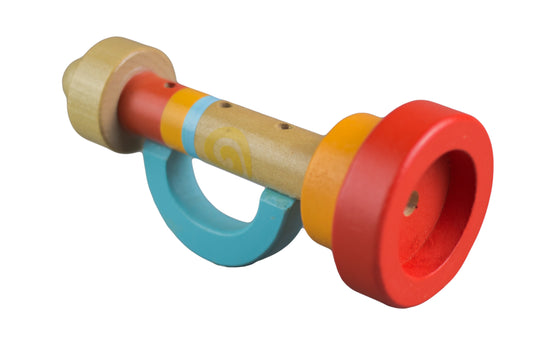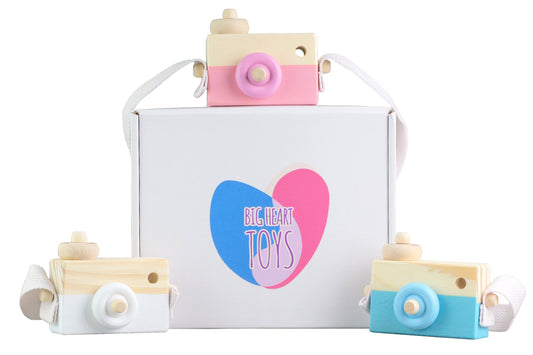Manners vary from country to country and change over time. Keeping up with modern manners can help children navigate a wide range of social situations.
Modeling manners to your child is a way to gently remind them about how to treat others with kindness and respect. The most practical place to introduce these good habits is around the dinner table with other family members. Your child will understand and learn their manners without even knowing you're guiding them!
Family meals are vital for growth, connection, and communication. Mealtimes are the perfect setting to introduce manners and show your children how to behave kindly and politely.
Below are some essential table manners that can help family dinners go off without a hitch:
1. Setting the Table
You can model proper etiquette and good table manners by showing children the correct way to set the table.
Family get-togethers tend to be more relaxed, so you probably won’t need to instruct your child in a fine dining setting — unless you want to go that extra mile! Demonstrating table manners at a casual dinner party works perfectly.
Generally, a dinner plate is placed in the middle, and a knife (either butter or steak) belongs on the right side of the plate, along with a spoon. Forks are placed to the left, and the beverage glass goes above the knife and spoon. We can be good role models for our children by setting the table correctly (and thanking everyone else who’s helped).
Placements for Visual Learners
You can find placemats with the correct settings marked for your little learners or even draw one yourself to help your child match the plates, silverware, and drinking glass to the location. When the table is properly set, it helps set the tone for an intentional practice of manners.
2. Practicing Food Manners
Food manners help prevent food fights, and they can also help children remain safe (and calm) during mealtimes.
Here are just a few basic food manners:
- Do not put too much food into your mouth at one time.
- Chew with your mouth closed.
- Say the magic words: “please” and “thank you.”
- Do not speak with food in your mouth.
- Do not slurp soups or drinks.
- Do not spit food out onto the plate or in your hand, even if you do not like the taste.
- No throwing food.
- Use your utensils instead of your hands when appropriate.
- Try not to slouch.
These manners are easy to introduce. Simply remind your younger family members of the rules of the table whenever they sit down.
3. Using Good Hygiene Practices
Getting messy is part of childhood. Sticky or dirty hands can result from playing for hours, working on a new artistic masterpiece, or exploring outside.
Come mealtime; sticky hands are no longer ideal. We want to help our children stay healthy by keeping germs at bay. Modeling proper hand washing helps ward off colds and the flu for the entire family.
Instruct your little ones to use warm water and scrub their hands for 20 seconds, which is just enough time to sing the ABCs (or “Happy Birthday” twice). Then, they can rinse and dry their hands off.
Young children should learn to wash their hands before meals, after using the bathroom, and after playing outside, getting messy, or handling garbage. Keeping step stools available around sinks can encourage your child to handwash independently, building confidence and responsibility.
To go a step further, encourage your children to sneeze or cough into their elbows (not their hands) to catch the germs rather than sending germs into someone else's space. Children use their hands for so many activities, and helping them keep their hands clean is crucial for good hygiene (and manners).
4. Communicating Politely
Indoor vs. Outdoor Voices
Now, let’s discuss the difference between indoor and outdoor voices and when it is appropriate to use each. For instance, it’s nearly always acceptable to play loudly outdoors. On the other hand, some environments, like libraries, schools, or shopping centers, call for indoor voices.
As caregivers, it’s our job to guide our children during conversations and let them know when adjustments are needed. We can gently alert them when voices are too loud for the location or, conversely, too soft to be heard.
Talking With Others
Your child might interrupt other conversations or talk over others, which can be disrespectful. You can help them understand that it’s impolite to talk over others' words — and that they can speak up when others talk over their words.
In addition, demonstrate to your children how to make eye contact while speaking, and they’ll maintain the habit into adulthood. However, remember that some children are averse to eye contact for a multitude of reasons. We never want to prompt children to do something they’re uncomfortable with. In this case, eye contact is not necessary.
Waiting To Speak
From here, you can take conversation manners a little further. Need an idea for how to help your child not interrupt?
Encourage them to put their hand on your arm when they need something. Then, whether you’re on the phone or talking to someone else, simply place your hand atop theirs to acknowledge your child’s need. Actions like these help children feel heard so they can wait patiently.
When you have finished chatting, you can proceed with the conversation to talk with your child. Practice this by pretending to talk on the phone and going through the steps that follow to ensure patience from your child.
5. Saying “Excuse Me”
Encouraging children to voice their desires and opinions can help them blossom into independent and self-reliant thinkers. For example, if your child wants to leave the table after eating or wants to take a quick break and return, they can announce their exit politely with a simple “excuse me.”
Children can also say “excuse me” for other instances, such as if they pass gas, burp, or need to maneuver past someone. When they use this polite phrase, it helps them get through situations that they might perceive as awkward or uncomfortable.
Another instance when children should use this phrase is when they are standing in front of a closed door. They should politely learn to knock first and say, “Excuse me. May I come in?”
6. Saying Please
Saying “please” is the most polite way to ask for something — it’s called the “magic word” for a reason.
Asking politely shows respect to another person, as no one wants demands made of them. At the table, this rule translates to asking for what they need instead of reaching across the table.
“Please” is one of our most valuable words. When children can remember to say “please,” they have a greater chance of having their requests granted.
However, we often need to remind our children that “no” is also a reasonable answer from another person, even when they ask politely. You can help them learn to say and hear no with stories and by modeling this behavior yourself.
7. Acting Grateful
After “please” comes “thank you.”
Gratefulness is a key part of manners, leading to a happier life in the long run. When a child learns the value of “thank you,” they understand that a favor was done for them. They can appreciate another person who has helped them in a meaningful way.
A toddler may not understand the concept of gratitude, but as they get older, they’ll come to understand its value.
Common instances when it’s appropriate for young people to thank somebody may include:
- After someone does something kind for them
- When they receive a gift
- When their meals and snacks were prepared for them
You can model this behavior by making sure to verbally thank those around you, both children and other adults. This is a powerful practice for everyone in the family to try.
8. Helping With Dinner
Have your child help you make the meals for dinner. This habit helps them understand how much work goes into making healthy, delicious food for everyone. Helping out can also make them open to trying more foods instead of turning up their nose.
When children know what goes into something like a meal, they are more likely to use their manners and be thankful to those who labored to make it. Additionally, cooking introduces new sensory experiences, strengthens family bonds, and encourages good cleanliness practices.
9. Maintaining No-Electronics at Dinner
“No electronics” is a helpful rule to set at the dinner table and maybe during other parts of the day, too.
This rule encourages young people to be present, listen, and avoid dismissing others. Just like adults, children can be easily distracted by messages, games, and videos on their digital devices, especially at the table.
When distractions are limited, connections can be made. Without electronics pulling their attention away, everyone can focus on being present. This rule also gives your child an opportunity to come up with their own games.
However, we’d also like to point out that some children use electronics to communicate. In that case, electronics can be a helpful tool for engagement and can factor into family discussions.
10. Cleaning Up After Meals
Good etiquette for a polite young person means cleaning up after themselves.
This aspect of good manners can be as simple as taking their dishes to the sink after being excused from the table. You can have your child help with the dishes when they are older, assigning them tasks like scrubbing and rinsing, putting plates into the dishwasher, and towel-drying the hand-washed dishes.
Cleaning up helps children understand that it takes a team to maintain a household. Your child can do their part, and the feeling of accomplishment they’ll get is a bonus that comes along with their good manners.
The Bottom Line
When you apply the tips listed above, manners will become second nature for your little ones. You can model manners at mealtimes and throughout the day with these simple practices. They all revolve around the golden rule: “Do for others what you would want done for yourself.”
Manners help your child maintain a peaceful coexistence with those around them and help them thrive as adults. While learning manners can be a process for your child, the outcome is always worth it!
Sources:
Teaching table manners to young children | MSU Extension
Teaching Kids to Wash Their Hands | Stanford Children's Hospital
Dining Etiquette | Kent State University
Techniques and Devices Can Help a Child Learn to Communicate | Pacer Center
How to Build Independence in Preschoolers | Child Mind Institute






